When the air starts turning crips and you feel that first burst of cool breeze, you know fall has made its debut. One of the best parts about living in the Pacific Northwest is you get to see the most amazing change of colors in the leaves. Do you have fall colors where you live? If so, go forage some leaves and learn how to make a foraged leaf garland for fall.
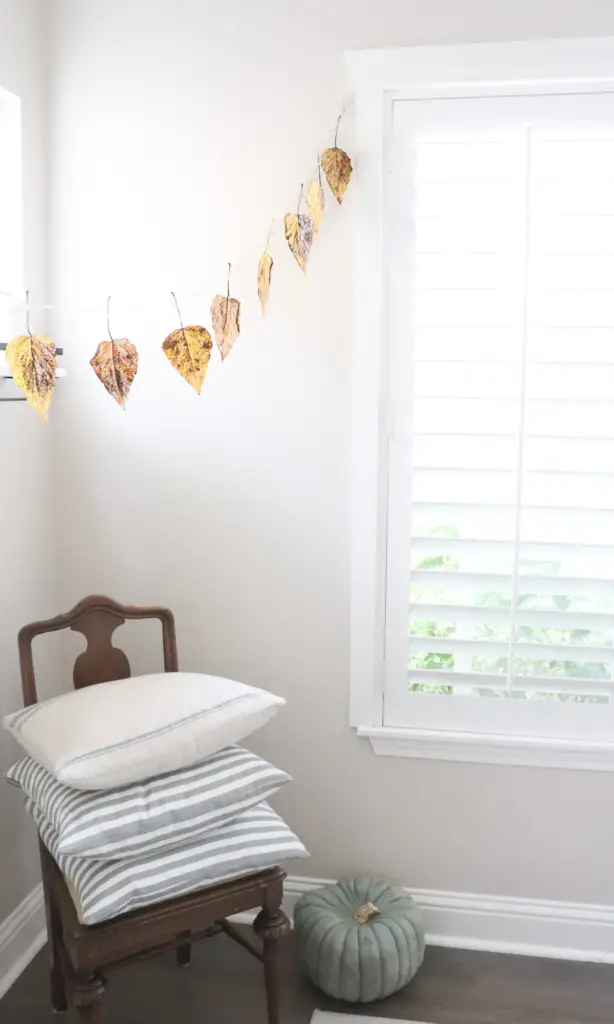
The Best Part about Fall
OK so I think between the pumpkin spice and the cool breeze there isn’t much NOT to love about fall. But if you live in the Pacific Northwest you know that we are very blessed that our area gets some amazing fall colors.
Now I’m writing this post in September and anyone who lives here knows the colors don’t really pop until October/November. But hey, I found some leaves on the ground so a girl can get excited about that right?!
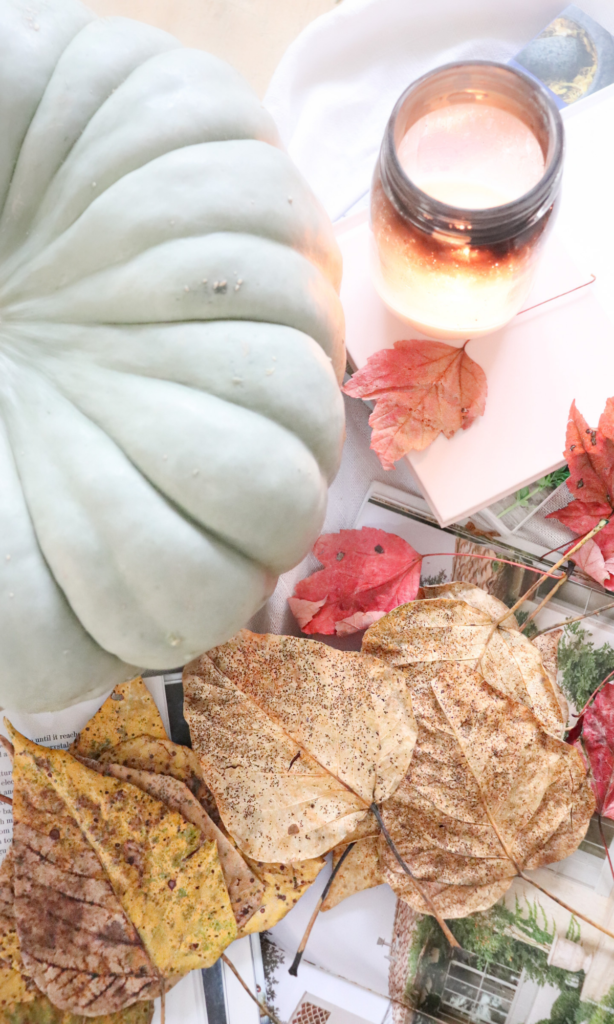
I have some pumpkin pear bread in the oven which is making or home smell incredible right now. Last week I shared our gluten free carob chip cookie recipe, another one that always brings people to the kitchen.
And that’s my other favorite part about fall, all the baking.
What We Get When We Forage Outside
Anytime we can pick our food from the outdoors we will usually do that. We have lots of local farms nearby, something I am very thankful for and why we moved to Duvall. If we don’t grow something ourself I know that there’s a farm down the street that does.
But there are some times when we are lucky enough to forage! Forage just means going into the wild and getting something tasty or fun.
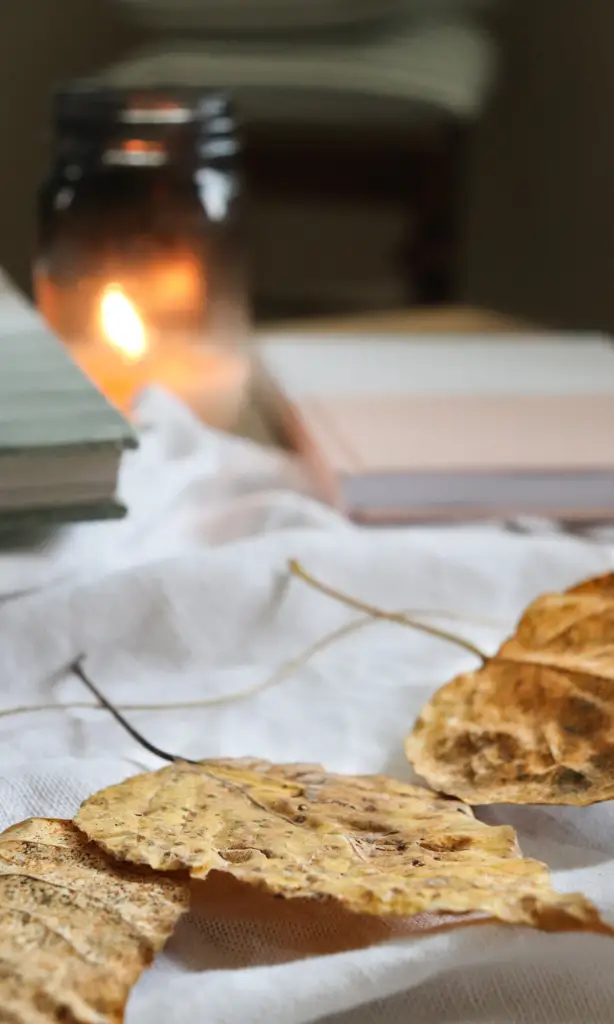
This post contains affiliate links, which means I may make a small commission off of items you buy at no extra charge to you.
Every August through September we forage blackberries and apples as those grow pretty freely around here. And I love going to the grocery store and seeing organic blackberries for $5 and thinking, or I could just go pick some by my house!
Apples are everywhere too. We even have our own apple tree! But, it’s still a baby and only produces one or two apples a year.
If you don’t have food to forage in your area, I’d bet you have some leaves! You can forage just about any leaf and make it into garland or a tablescape. It doesn’t have to have pretty colors either; in fact, I think the neutral colored leaves are some of my favorites. They go better with the colors in our home anyways!
Foraged Leaf Garland for Fall Materials Needed
(Yields a 6 foot long garland)
14 foraged leaves with long stems. Try to get ones that are similar in color and shape and have long, straight stems.
Approximately 122” of cooking twine
Scissors
Half Pound clear plastic command hooks
Heavy books for pressing
How to Make a Fall Foraged Leaf Garland
- Forage about 14 large triangular leaves of similar color with nice long and straight stems.
- Place the leaves in between pages of a heavy book. Spread the leaves as best you can, but you don’t need to place one leaf per page. They can be spread throughout say three to five pages.
- Close the book and let the leaves sit in the pages for about 48 hours so they are nice and flat.
- Cut an 80″ strand of cooking twine or hanging string. On either end, use about two inches to tie a bow, the traditional way with two bunny ears. Loosely tighten it so that you can adjust it later if need be. Lay it flat on the floor
- Place the leaves evenly along the garland, approximately 5-6″ apart each.
- Cut another strand of cooking twine, this time 42″ inches long. This strand will be used for the leaf ties. Fold the twine in half, and then in half again, and again – four times total. This will yield roughly 16 2″ pieces of twine that you will use to tie the leaves to the garland.
- Tie a small knot around each leaf stem until you’ve finished all the leaves, making sure to keep your leaf spacing even across the garland.
- Hang as desired. We used clear plastic half pound Command Hooks. I like these because you can hardly see them and they’re easy to remove later!
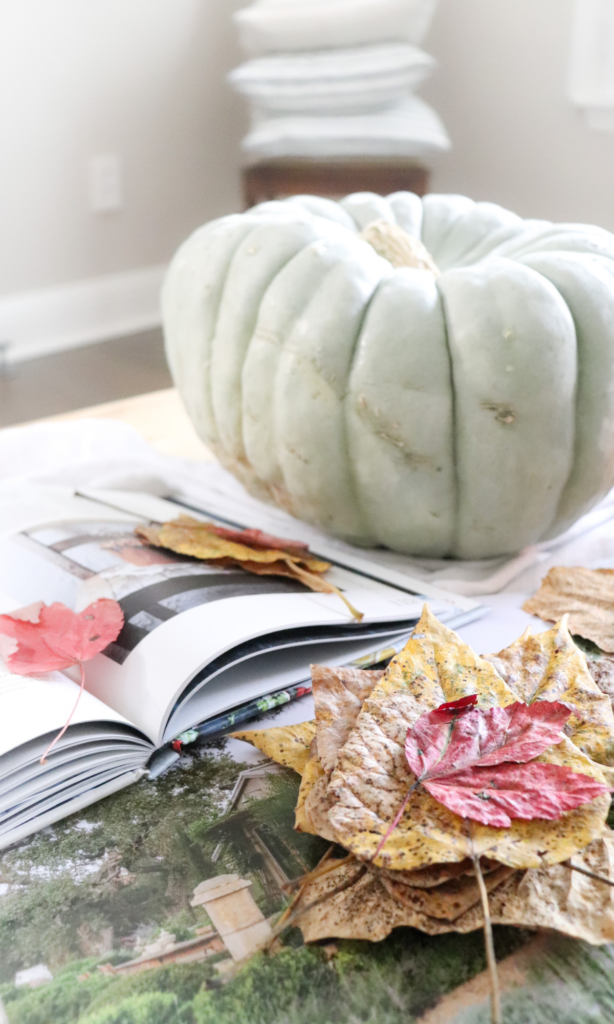

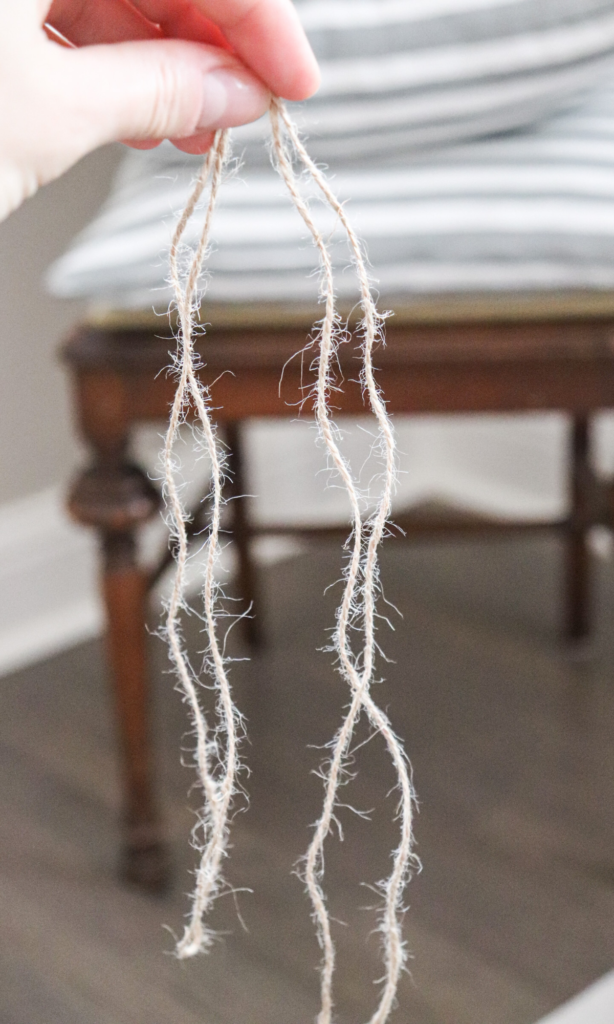
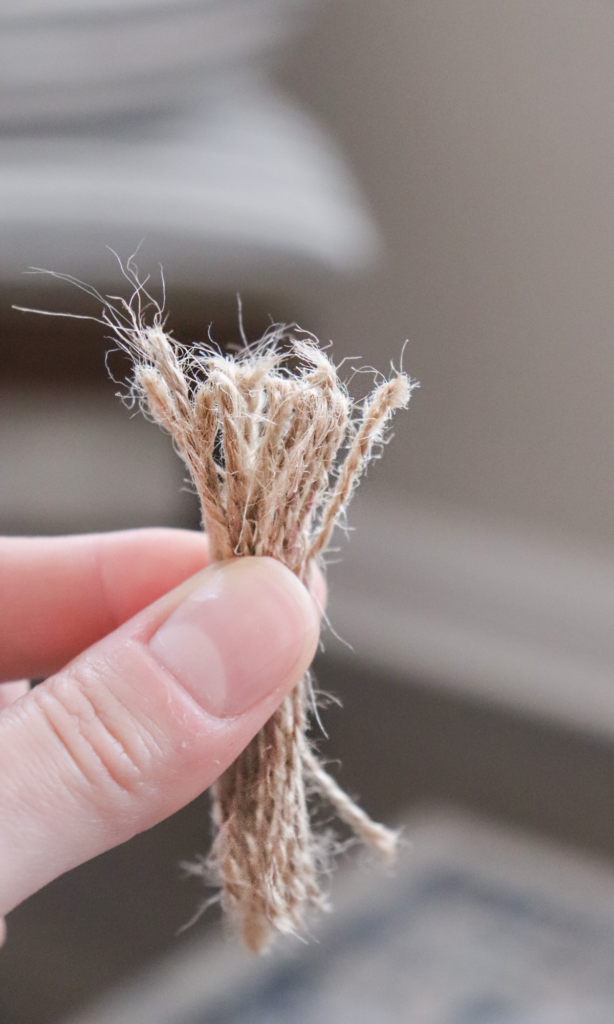
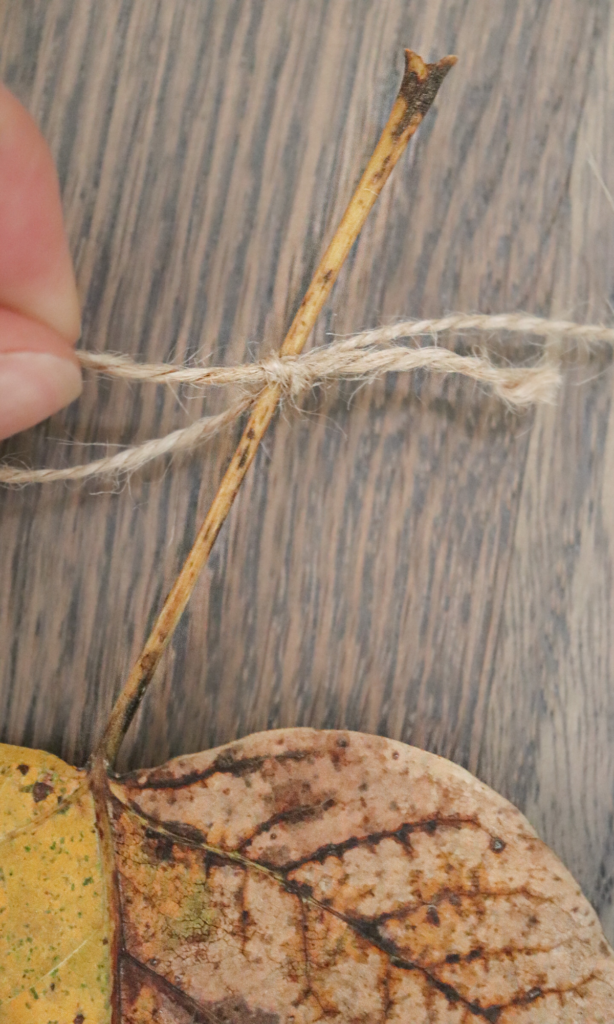
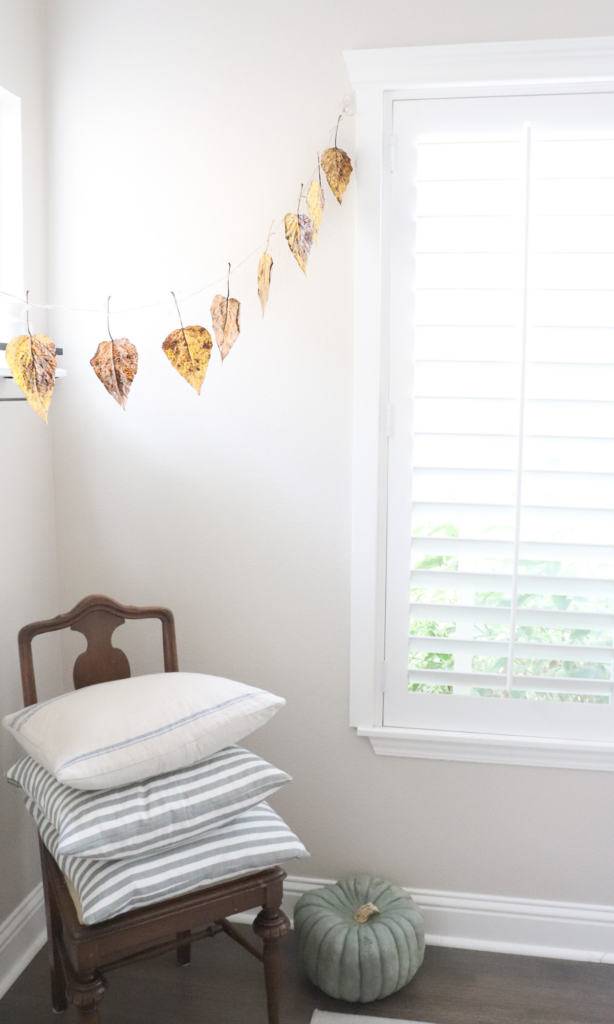
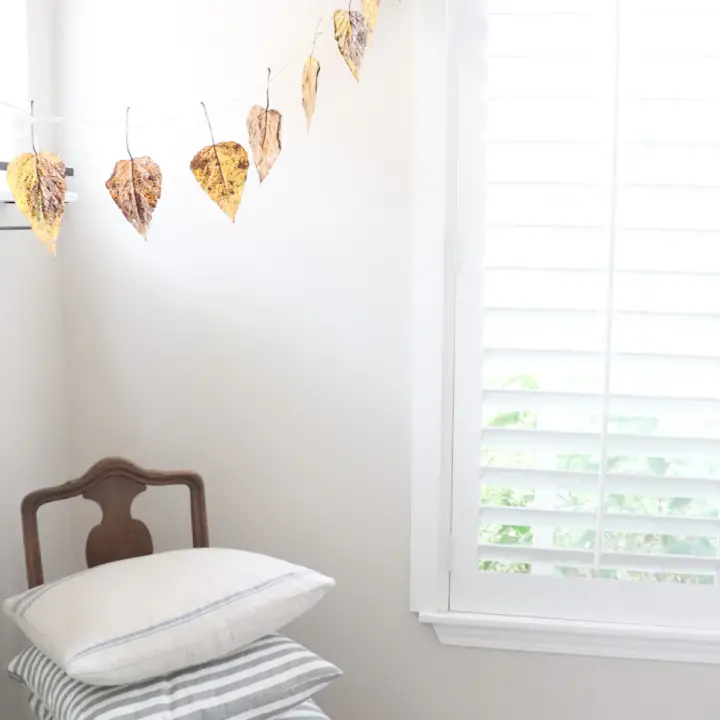
Foraged Leaf Garland for Fall
Learn how to make this cozy foraged leaf garland for fall, perfect for the all natural farmhouse!
Materials
- 14 foraged big triangular leaves with long stems
- Approximately 122” of cooking twine
- Half Pound clear plastic command hooks
- Heavy books for pressing
Tools
- Scissors
Instructions
- Forage about 14 large triangular leaves of the same color with long stems.
- Place the leaves in between pages of a heavy book. Spread the leaves as best you can, but you don’t need to place one leaf per page. They can be spread throughout say three pages if you want. Let dry for 48 hours for the best flat, crispy leaves.
- Cut an 80" strand of cooking twine or hanging string. On either end, use about two inches to tie a bow, the traditional way with two bunny ears. Loosely tighten it so that you can adjust it later if need be. Lay it flat on the floor
- Place the leaves evenly along the garland, approximately 5-6" apart each.
- Cut another strand of cooking twine, this time 42" inches long. This strand will be used for the leaf ties. Fold the twine in half, and then in half again, and again - four times total. This will yield roughly 16 2" pieces of twine that you will use to tie the leaves to the garland.
- Tie a small knot around each leaf stem until you've finished all the leaves, making sure to keep your leaf spacing even across the garland.
- Hang as desired. We used clear plastic half pound Command Hooks. I like these because you can hardly see them and they're easy to remove later!
Notes
Made a foraged leaf garland? Send it to me on Instagram or Facebook and I'll share it on my feed! @theduvallhomestead
Fall at The Duvall Homestead
How to Make Pumpkin Pie with a Real Pumpkin
How to Make an Olive Branch Wreath
Gluten Free Cookies Recipe with Carob Chips
Learn How to Make Ratatouille – a Family Favorite!
Pin it for Later!
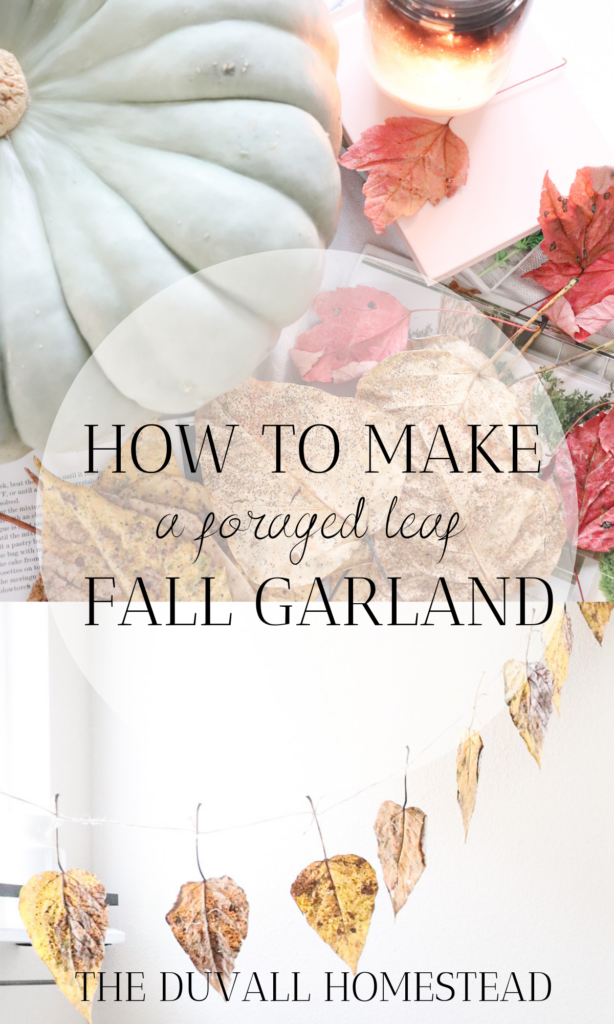
Ps – how cute is our kitten Winter?!

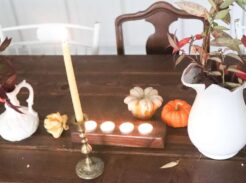
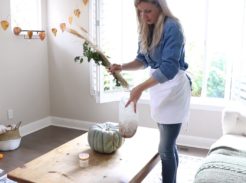
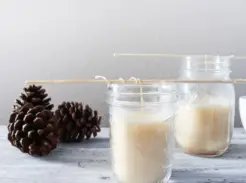
This is such a cute idea! Going to try making this with my kiddos!
I need to do this with my kids! They love finding leaves on our walks.
What a cute idea! I love this! I can see I’m going to be going leaf hunting lol.
Lol that’s the best 🙂